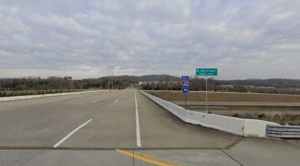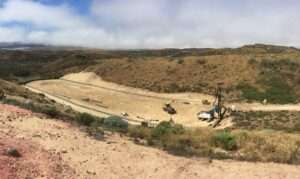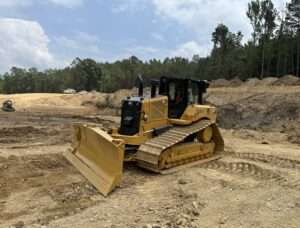The Future of a Resilient Energy Infrastructure Hub in Portland, Oregon
Date: Jul 10, 2024
Portland, Oregon, known for its vibrant culture and commitment to environmental sustainability, is also home to a Critical Energy Infrastructure (CEI) Hub essential to the state’s energy supply chain. Located on loose silt and the sand banks of the Willamette River, this hub includes 11 fuel terminals that house more than 600 large-scale, above-ground fuel storage tanks. These terminals are vital for storing and distributing approximately 90% of Oregon’s gasoline and diesel fuels.
When the Portland CEI Hub was established in the 1950s, the location was ideal for mass transportation and distribution. However, developers were unaware of the earthquake risks in the region posed by the seismic activity of the Cascadia Subduction Zone (CSZ). The majority of these fuel storage tanks were built before the implementation of today’s seismic design standards.
Understanding Seismic Risks
The CSZ is a 600-mile fault that runs from northern California to British Columbia, 70-100 miles off the Pacific Coast. Though it hasn’t produced an earthquake since 1700, the CSZ is capable of producing a 9.0+ magnitude earthquake and resulting tsunamis that could reach nearly 100 feet on the coasts of Oregon and Washington. Over the last 3,500 years, this fault has produced 7 earthquakes of magnitude 8 or greater, with intervals of less than 400 years between 4 of them.
Current earthquake science predicts that there is a 37 percent chance that a magnitude 8 or 9 CSZ earthquake will occur within the next 50 years. During such an event, the Portland CEI Hub would experience ground shaking, liquefaction (soil softening and vertical settlement), and lateral spreading (soil movement towards the Willamette River).
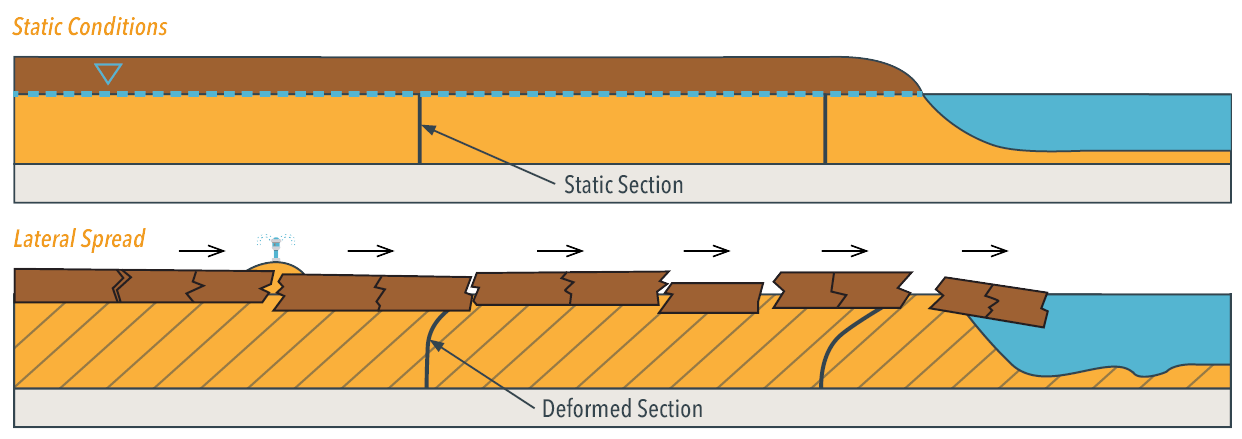
The differential soil movement caused by liquefaction and lateral spreading is expected to rupture many of the tanks within the CEI Hub, resulting in the release of between 94 and 193 million gallons of fuel. This would result in the largest oil spill in U.S. history, with 43 percent of the release expected to flow into the Willamette River. If such an earthquake occurred under the current conditions, we can expect huge loss of life, billions of dollars in required remediation, the loss of Oregon’s energy distribution infrastructure, and devastating ecological impacts.
In response to these risks, Oregon lawmakers enacted Senate Bill 1567 in 2022. This legislation mandates that operators of bulk fuel terminals conduct thorough seismic vulnerability assessments and develop state-approved seismic risk mitigation plans. Assessments are currently being conducted by fuel terminal operators in CEI Hub to develop energy security and improvement plans to enhance preparedness for inevitable seismic events.
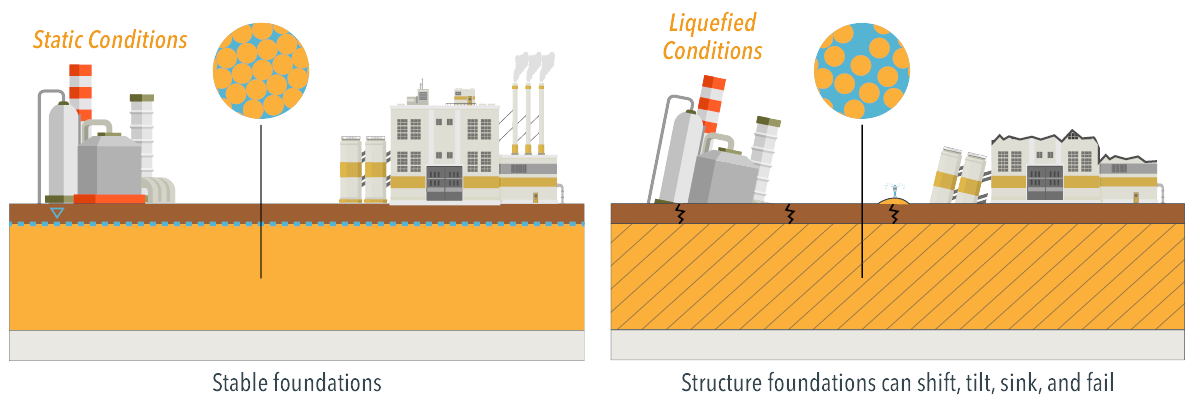
Innovative Solutions for Seismic Resilience
Ready for the good news? We have the knowledge, technology, and experience to address these challenges, today. We at ENTACT have vast experience working in and around critical infrastructure facilities across the country to address issues before they become a major problem.
Our solution is to employ advanced techniques like Deep Soil Mixing (DSM) and in-situ stabilization (ISS) to strengthen the soil beneath critical infrastructure, mitigating the risks associated with liquefaction and lateral spreading. DSM is a proven ground improvement technique that involves mechanically mixing cementitious binders into weak or loose soils, creating a high-strength soil-crete monolith. This process transforms loose soils into a solid foundation capable of withstanding seismic forces and preventing seismic liquefaction and lateral spreading. By reinforcing the natural characteristics of soil, we can create a more resilient foundation for critical infrastructure.
Collaboration is Key
As Oregon and the Pacific Northwest continue their efforts to enhance seismic resilience, collaboration is crucial. Geotechnical construction experts like ENTACT, geotechnical design engineers, policymakers, and terminal owners at the CEI Hub must work together to implement proactive measures and innovative technologies that safeguard critical infrastructure and protect local ecosystems. By investing in seismic assessments, mitigation strategies, and sustainable mitigation practices, we can build a safer, more resilient future.
For more information on seismic resilience and geotechnical construction solutions, we’re happy to connect you with our experts at ENTACT. Understanding these concepts is crucial for fostering community resilience and ensuring the long-term sustainability of critical infrastructure.
